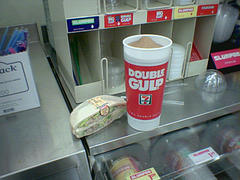Downsizing Soft Drinks
In a recent New Yorker column, one of our best economics journalists, James Surowiecki, discusses Mayor Bloomberg’s proposal to ban sales of soft drinks in containers exceeding 16 ounces. Mayor Bloomberg clearly believes, and Surowiecki seems to agree, that people would consume smaller amounts of soft drinks and fewer calories if a ban were enacted.
But would the effect result from behavioral considerations—many people will drink only one serving whether it is 8 oz. or 32 oz.? Or would it result from the second drink costing more time—the effort to get up and order a second 16-oz. drink after buying one—and more money—because the per-ounce price reflects the additional cost of serving two 16-oz. portions instead of one larger portion? Outside the laboratory, what many argue is evidence for behavioral economics can often be explained by standard neoclassical considerations of money and time costs in demand.


Comments